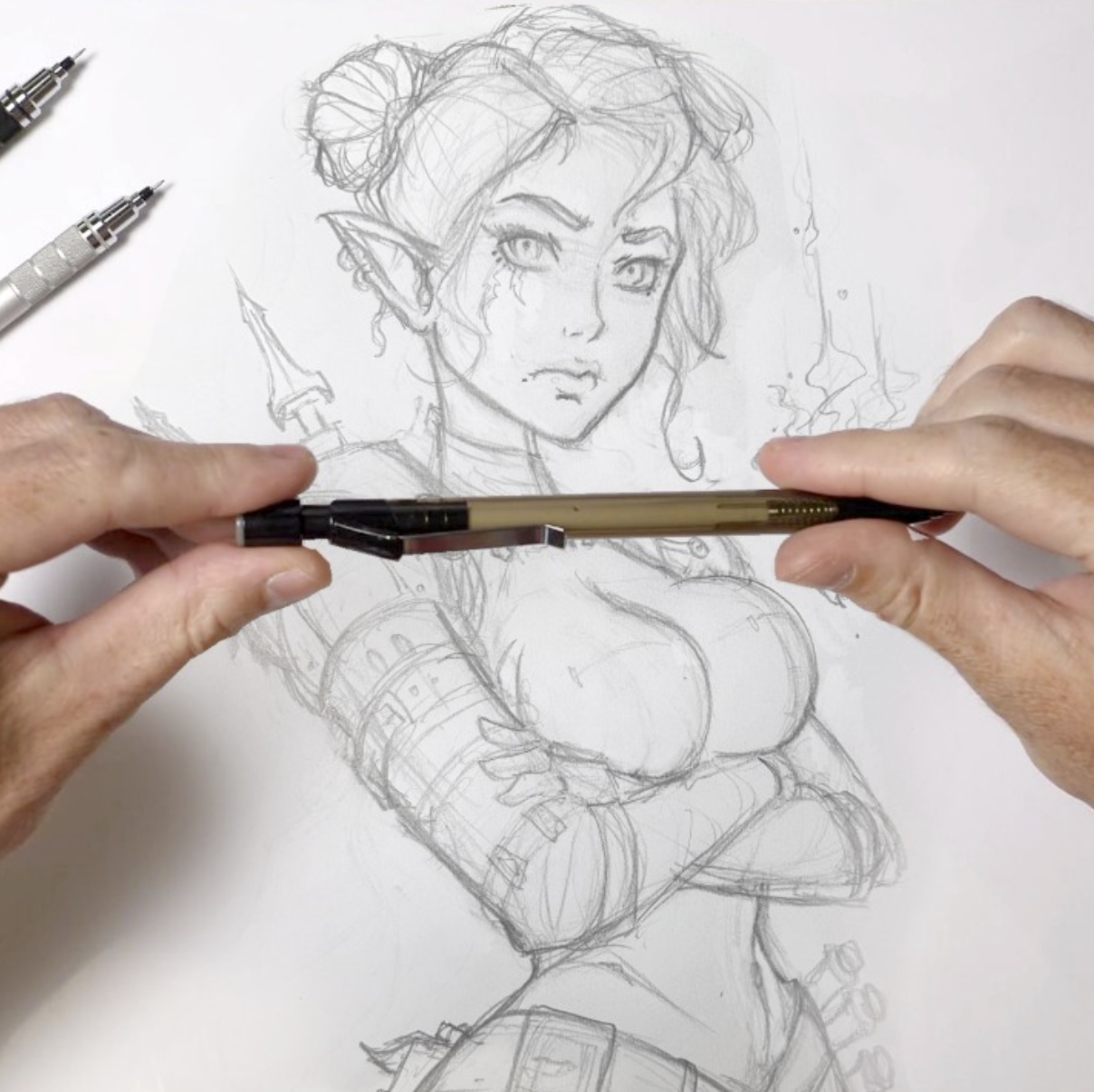If you’ve ever looked at your character sketches and thought, something’s missing, you’re not alone. Drawing characters can be tricky, especially at the start — but it’s also one of the most rewarding skills to develop.
The good news is, you don’t need “natural talent” to get to a professional level. With the right strategies, theory and consistent application, you’ll see huge improvements pretty quickly!
Here are 7 practical ways to level up your character drawing:

Anatomy is one foundation of believable characters. You don’t need to memorize every muscle like a med student, but understanding how the body moves makes a huge difference. For example, in My Hero Academia, characters like All Might and Deku have exaggerated physiques, but they still follow the logic of human anatomy—muscles flex where they should, joints bend naturally, and their poses feel grounded.
Think of anatomy as a toolkit. Once you get the basics down, you can stylize freely—whether you’re designing a hulking warrior, a slender elf, or a quirky cartoon character.
A stiff drawing, even if technically accurate, can feel lifeless. Gesture is what brings your characters to life—it’s the flow of movement, the body language, the lines of action and the “attitude” of the pose. Look at Spider-Man in Marvel comics: his body twists and bends in extreme, dynamic ways, and it works because the gesture is so strong. The on-page read of his movement is immediately clear.
When you capture the rhythm first, you’ll notice your characters instantly feel more animated, whether they’re standing, running, or just sitting in thought. Think of it as an iconic communication of the overall movement.
Even the best artists don’t draw purely from imagination. References and inspirations give you the grounding you need to make your work feel real. Take Final Fantasy character designs: Tetsuya Nomura blends realistic fashion references with fantasy elements, which is why his characters feel both imaginative and believable. Gotta love those stylish threads!
Using references doesn’t mean copying. It means studying how clothing folds, how a pose distributes weight, or how armor reflects light—then reinterpreting that knowledge in your own style.
Expressions are where your characters’ personalities really shine. Imagine Naruto without his big grins or angry scowls—it just wouldn’t be the same. A face can tell a story before a single word of dialogue is read.
Whether it’s an exaggerated anime-style reaction or a subtle, almost hidden emotion like in a Studio Ghibli film, expressions make your characters relatable and memorable. Always, always try to make sure your character has a clear and relevant expression for the mood or scene you’re trying to create. Don’t leave it static and dull!
The right outfit or accessory can say more about a character than a page of description. In The Legend of Zelda, Link’s green tunic and Master Sword aren’t just decorative—they define his role as the hero. In contrast, a cyberpunk character might wear glowing neon gear, instantly signaling a gritty, futuristic world, and implying the genre and even the feel of the context.
Props and costumes aren’t extras—they’re storytelling tools. They show the viewer who your character is, where they come from, and what they value. Perspective can be key for this, so also try to make sure you have a good grasp of perspective drawing to make your props the best they can be!
Strong silhouettes make your characters instantly recognizable. Picture Batman—you’d know him by the cape and pointed ears alone. The same goes for One Piece characters like Luffy and Zoro; even in silhouette, their hats, swords, and stances give them away immediately. If you’re drawing the same character in multiple images )for example, for a comic or manga, or for an illustration series) try to think carefully about the overal ldesign so that the silhouette read communicates the character just as much as everything else.
A clear, unique silhouette not only makes your character stand out but also communicates personality—broad and blocky for strength, thin and angular for agility, rounded for friendliness or gentleness. Shape langauge in your silhouettes is critical!

Want to speed up your progress? Online courses and workshops can save you years of trial and error. Many professional character artists—from Marvel illustrators to anime concept designers—share their methods online. You can learn structured techniques for anatomy, design, and storytelling straight from the pros.
For example, if you love the expressive, dynamic style of shōnen anime, there are courses that break down exactly how to capture that energy. If you’re into video game design, concept art courses will teach you how to create characters that fit seamlessly into a world. The best part? You can go at your own pace and rewatch lessons whenever you need. Make sure though that you always ground yourself in character drawing and art fundamentals before focusing on specific stylizations!
Improving your character drawing is about more than practice (way more) — it’s about intentional practice using art theory to guide you. Study anatomy, focus on gesture, learn from references, and use expressions, costumes, and silhouettes to tell your character’s story. And if you really want to fast-track your growth, invest in an online course that matches your goals.
Remember: every character you draw is a step forward. Keep going, and soon your designs will feel as alive and memorable as the ones you admire in anime, games, and comics. Need assistance learning to draw? Check out our courses or grab some one on one coaching to really put the fire in your soul!